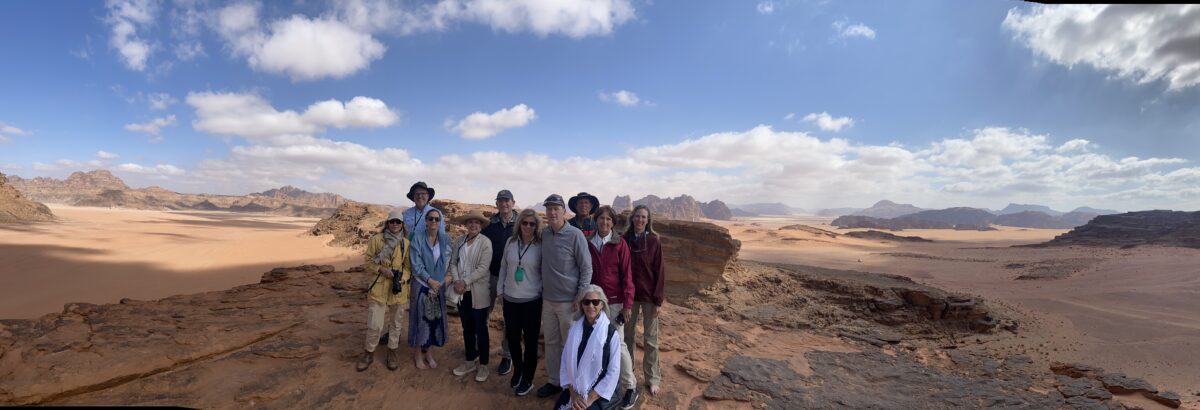
See Part 1 where we discuss our decision-making funnel which lead to trip and how we initially made our way to Jordan, and ultimately Petra and Wadi Rum, here. (link)
See Part 2 where we meet our tour group and visit the Dead Sea, Jaresh, and Mt. Nebo here. (link)
See Part 3 where we pretend we’re Indiana Jones and visit Petra here. (link)
How do you beat Petra? Well, lets start here. You don’t. You just move on.
And move on we did, on a long, long bus ride from the iconic ruins the following morning to Wadi Rum, the famous area where Lawrence of Arabia helped the locals defeat Turkish overlords.
If you are neither a history scholar nor film critic, TE Lawrence was a British officer who worked with Arab kings and princes to help them secure their independence from the Ottoman empire. Why would he do that? The Ottomans were also the enemies of the British, and if they could spur a rebellion in the region, it would not only work in the favor of the Brits for the war, but also give them a key ally in the area afterward.

But if he had been only a liason, TE Lawrence wouldn’t have garnered so much notoriety. He became famous because he seemed to fall in love with the culture, the people, and the Arab fight for independence in a way that most foreigners wouldn’t. He fought for the locals in heated exchanges with higher-ups in the British military, securing weapons and reinforcements when it seemed like none would be available. Lawrence risked his life on the front lines when the logical and safe place for a foreigner was back at camp.
From Petra, the landscape slowly changed from rocky and mountainous to straight desert. The only mountains now were in the distance. We stopped for a break after a couple of hours driving south, and the differences between Jordanian rest areas and those in America were immense, while still feeling in a commercial way, eerily similar. Restrooms were behind a huge store (similar to those along a USA interstate) selling everything from ornate furniture to chess sets and cheap jewelry.
That was different.
How the hell we’d bring a dining room set home would have been beyond us if we hadn’t witnessed Americas doing just that in southeast Asia. It appears now to us that American rest areas are the exception, because this felt very much like a rest stop in Vietnam where we’d eaten tasteless pho. That restaurant had also been behind a big store, where a fellow American traveler was purchasing a huge statue (in my opinion, one of the uglier statues in the place) and having it shipped back home, where we personally prayed for his sake that he hid it in the back yard. But that’s another travel story for another blog post.
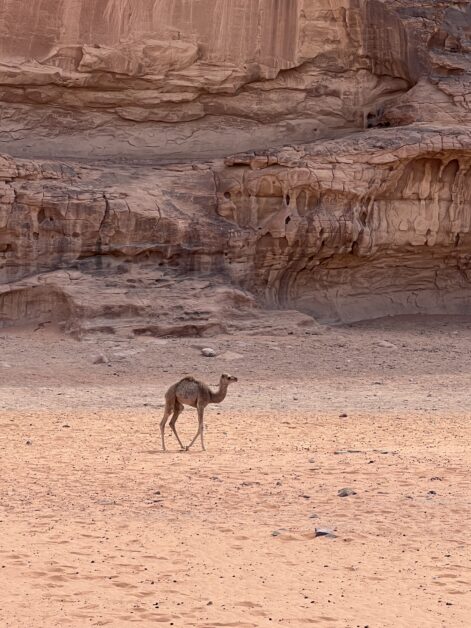
Back on the bus, we saw camels walking down the highway! Truly a different world (and one that I hadn’t seen in southeast Asia, for that matter).
Wadi Rum was a national park at the end of a long road. The words Wadi Rum mean “Valley of the Moon.” It’s a landscape of natural rock formations, cut into the desert landscape. Men in rusty Toyota trucks were waiting to load us into the back of each, handing us blankets as we jumped in. Even with the blankets, as we sped between gigantic formations, it was still cold. We didn’t mind, because we were seeing sights we knew we may never see again. Huge ancient markings of camel trains on cliff walls. Real live camel trains led across the desert. Camps where some visitors spent the night.

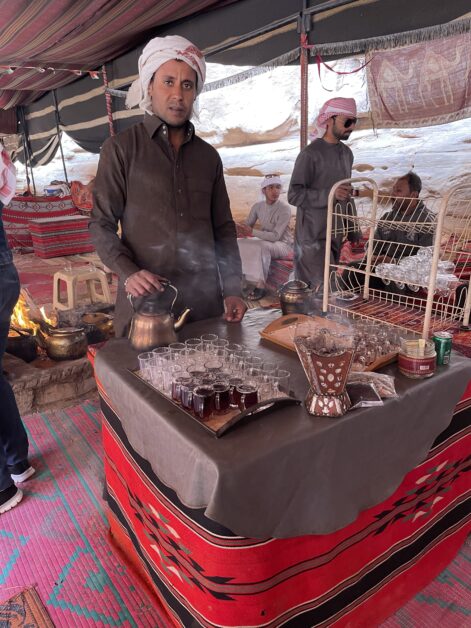
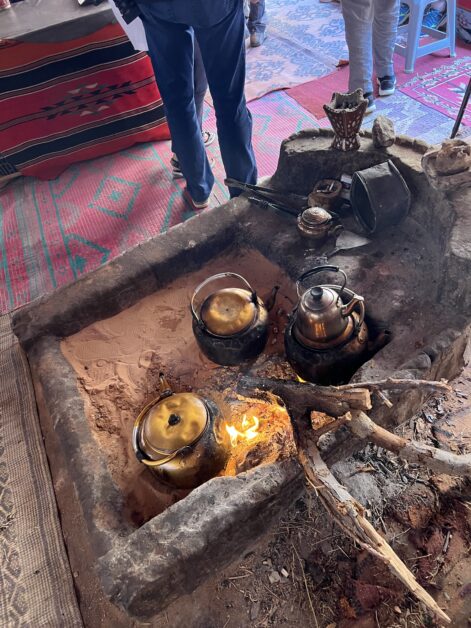
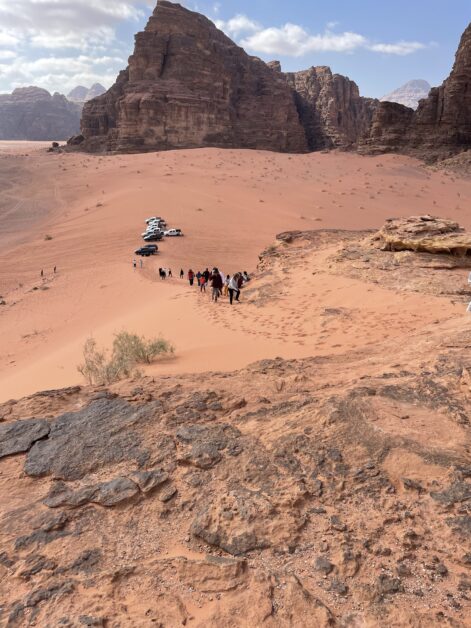


On spending the night at Wadi Rum: our tour didn’t include this option. Cheryl’s sister Laura highly recommended we do it, but we had no choice. If you have the chance to go, we too are convinced that you should spend the night. The stars must be amazing and the desert is a such a beautiful place that it would be well worth the effort to plan this into your travel if at all possible. If we go back, we surely will include this.
For us however, after a climb up a sand dune for some sweeping, wide-angle shots of the surroundings, our guides led us into a narrow canyon and a Bedouin camp. A long, low tent covered an area above rugs spread on the floor. We sat near a fire on low stools and we learned about Bedouin tea. Apparently, much like polite society in America, there are customs to be followed when you serve guests tea. If your host fills it to the brim, it’s because he’s hoping to embarrass you when you spill it. The tea was good and the company even better. Before we knew it, some in our group were purchasing teas, soaps, or other small trinkets, and we were all-too-soon loaded back into the Toyotas, back in the bus, and headed for Aqaba.
Aqaba looked to be a beautiful city by the sea, but we didn’t get to see much of it, beyond quick views of the water. We marched on to a plane and before we knew it, our wings pointed west and we were off to Egypt.
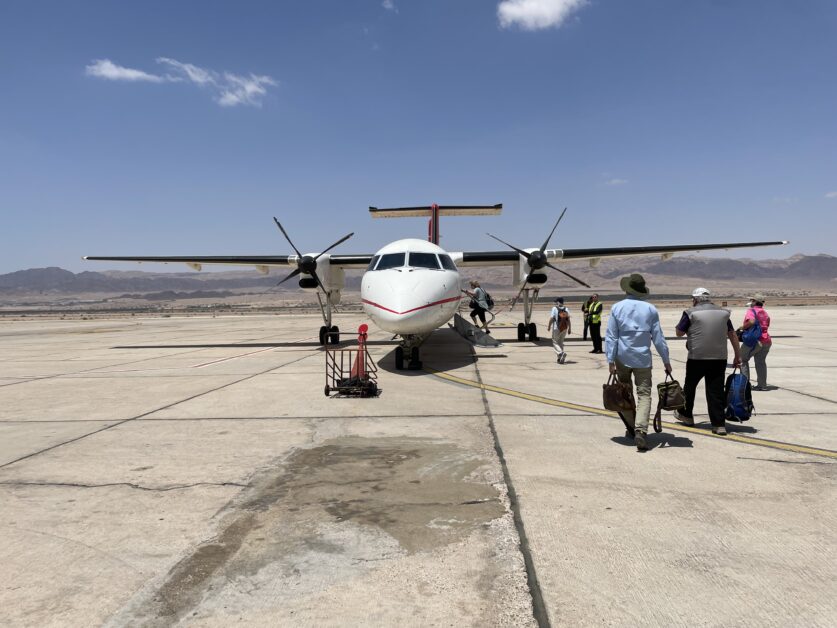
I never knew how much I’d wanted to go to Egypt until we landed. It felt weirdly important that I was there. It was hot, it was dry. At least It seemed less rocky than Jordan.
The city of Aswan was poor. We’d seen poverty in Vietnam and Laos, but many people in these areas seemed happy. Aswan did not. Aswan seemed oppressed. We felt like interlopers (and continued to feel this way through much of our travel through Egypt). We could feel how privileged it was to grow up in a middle class family in Michigan. These people, for the most part, seemed to have very little.
The Old Cataract Hotel
Our lodgings, however, were amazing. The difference between the city of Aswan and the Old Cataract is stark, as is also the difference between the old, elegant hotel, and the newer second tower. Egypt aligned with the USSR during the cold war, and Russian builders created a second part of the property which couldn’t look more different than the original. They took the best of Russian architecture (sarcasm included for no extra fee) and slapped it into this historic, beautiful location.
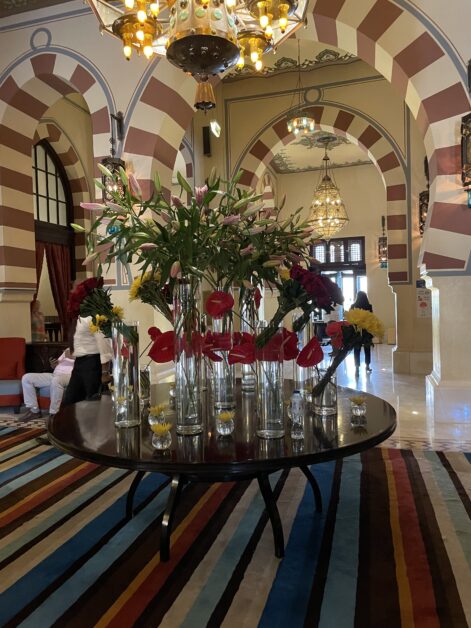
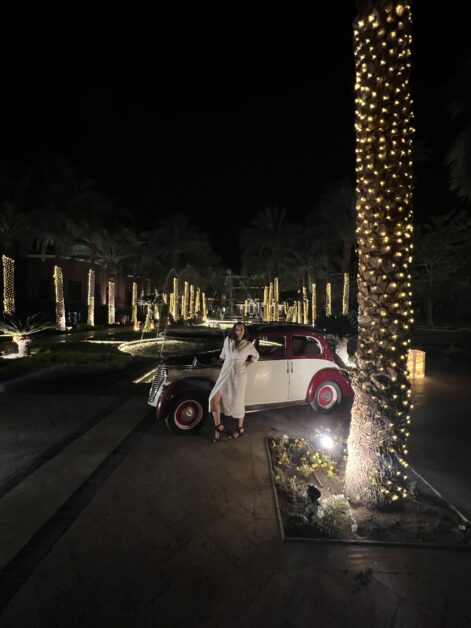



Tauck Tours reserved us rooms in this second tower, explaining to us that the fees were so astronomical that this was the only way we’d be able to experience the splendor of the place. They’d clearly done their homework, because the building was a huge surprise. Management had gutted the Russian tower and turned it into a deluxe showplace. Our room–or should we write “rooms”–were amazing. We had a separate sitting area, writing nook with a desk, maybe the world’s largest bathroom, and a beautiful bedroom. Best of all? The views from our balcony looked over the pool and right up spine of the Nile river. To our right, we had a front row seat to the old, historic building. Fabulous.


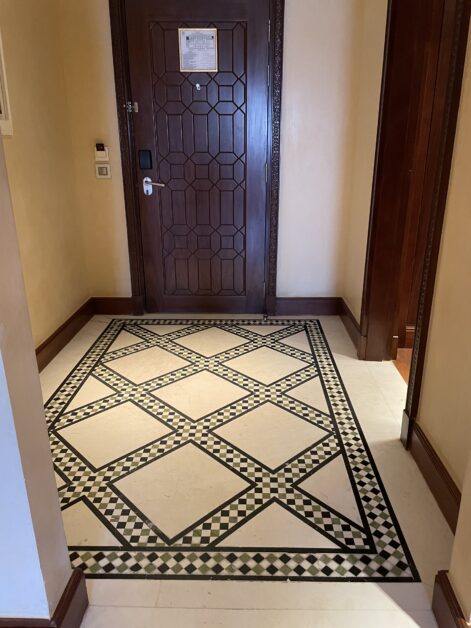




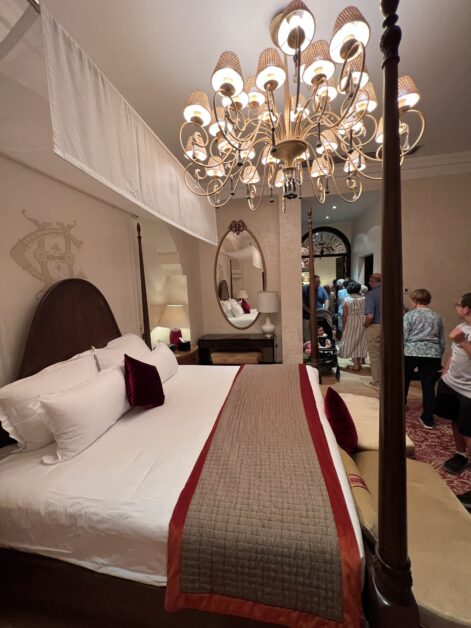
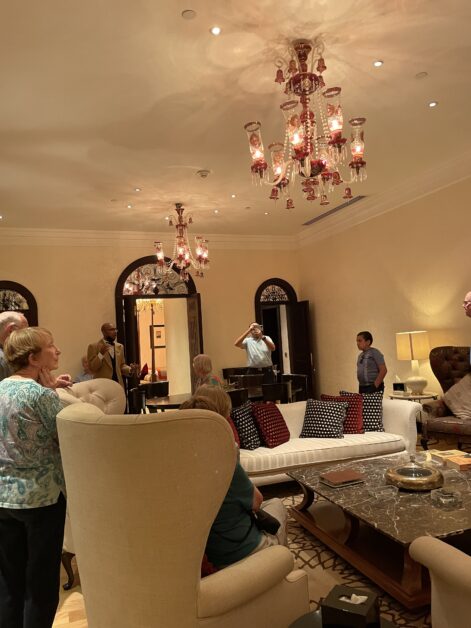
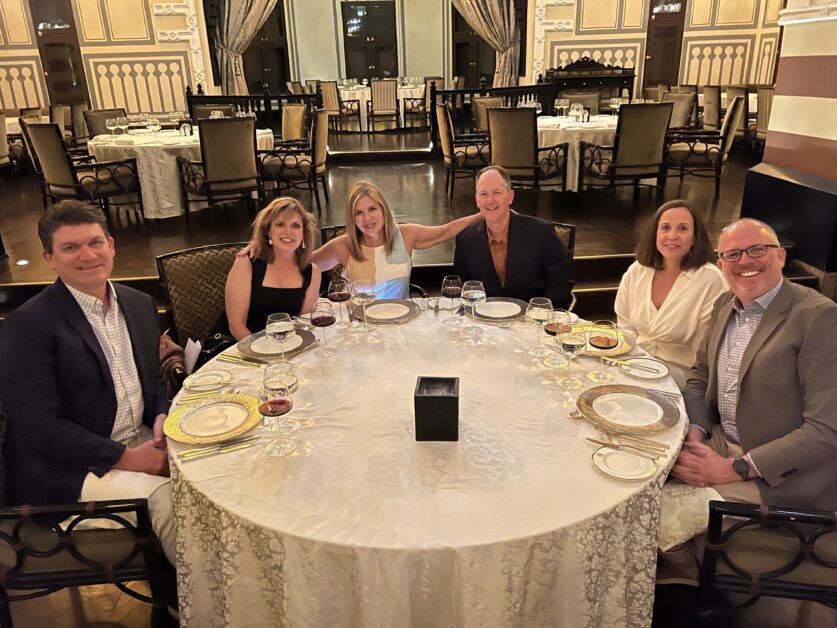
The first evening we boarded a historic riverboat and floated up and down the Nile. The crew fed us fruits, cheeses, and both red and white wines. We were sailing on the Nile! Unexpectedly, the crew broke out some crude instruments and began serenading us. If you’re able to book one of these sunset cruises, we both highly recommend it.

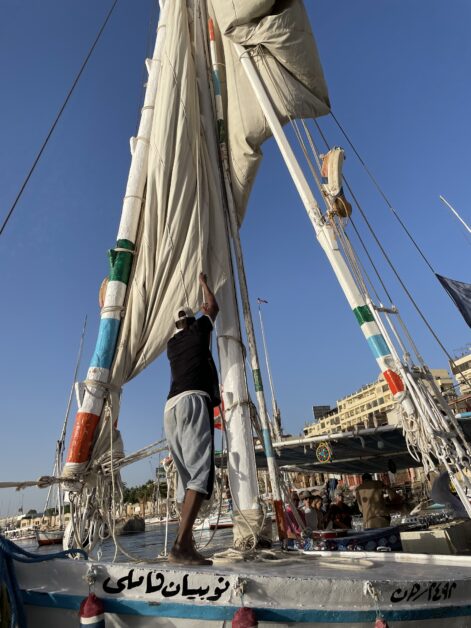

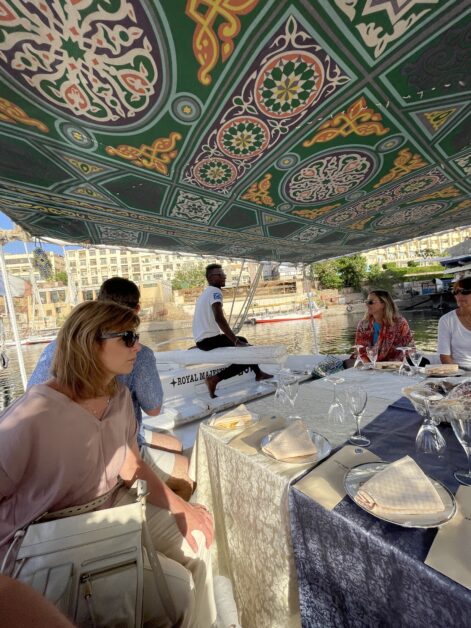
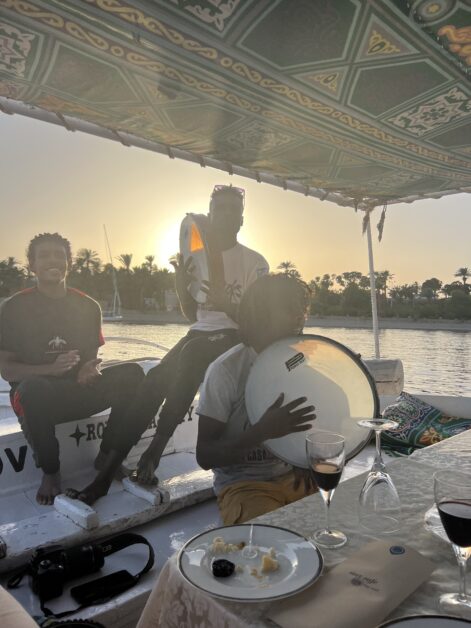
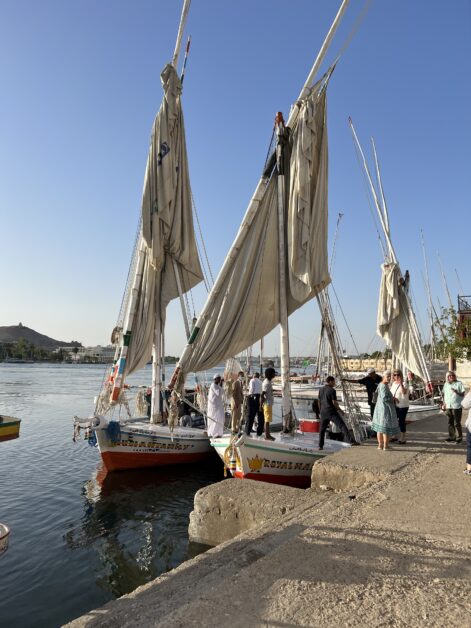
We were in Egypt! The next morning we were BACK on a plane to visit one of the epic spots of the entire trip: Ramses tomb–Abu Simbel. We’ll pick it up there, next time!


Leave a Reply